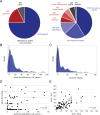The Evolution of Earned, Transparent, and Quantifiable Faculty Salary Compensation: The Johns Hopkins Pathology Experience
- PMID: 29978019
- PMCID: PMC6024278
- DOI: 10.1177/2374289518777463
The Evolution of Earned, Transparent, and Quantifiable Faculty Salary Compensation: The Johns Hopkins Pathology Experience
Abstract
Faculty value equitable and transparent policies for determining salaries and expect their compensation to compare favorably to the marketplace. Academic institutions use compensation to recruit and retain talented faculty as well as to reward accomplishment. Institutions are therefore working to decrease salary disparities that appear arbitrary or reflect long-standing biases and to identify metrics for merit-based remuneration. Ours is a large academic pathology department with 97 tenure-track faculty. Faculty salaries are comprised of 3 parts (A + B + C). Part A is determined by the type of appointment and years at rank; part B recognizes defined administrative, educational, or clinical roles; and part C is a bonus to reward and incentivize activities that forward the missions of the department and medical school. A policy for part C allocations was first codified and approved by department faculty in 1993. It rewarded performance using a semiquantitative scale, based on subjective evaluations of the department director (chair) in consultation with deputy directors (vice chairs) and division directors. Faculty could not directly calculate their part C, and distributions data were not widely disclosed. Over the last 2 years (2015-2017), we have implemented a more objective formula for quantifying an earned part C, which is primarily designed to recognize scholarship in the form of research productivity, educational excellence, and clinical quality improvement. Here, we share our experience with this approach, reviewing part C calculations as made for individual faculty members, providing a global view of the resulting allocations, and considering how the process and outcomes reflect our values.
Keywords: Bonus/Supplement/Incentive (BSI) component; academic relative value unit (RVU); faculty salary; performance-based incentive compensation (PBIC); research RVU (rRVU).
Conflict of interest statement
Declaration of Conflicting Interests: The author(s) declared no potential conflicts of interest with respect to the research, authorship, and/or publication of this article.
Figures




References
-
- McHugh PR. A “letter of experience” about faculty promotion in medical schools. Acad Med. 1994;69:877–881. - PubMed
-
- Rand C, Fivush B, Ishii L, Clements J. Final Report and Actions 2014: Johns Hopkins School of Medicine Faculty Satisfaction Survey, 2013. Baltimore, MD: Johns Hopkins University School of Medicine; 2014.
-
- McArthur J, Kang S, Clements J, et al. Johns Hopkins Medicine—School of Medicine Taskforce on Improving Faculty Compensation Report to Dean Paul Rothman, Baltimore, MD: Johns Hopkins University School of Medicine; 2015.
-
- Reece EA, Nugent O, Wheeler RP, Smith CW, Hough AJ, Winter C. Adapting industry-style business model to academia in a system of performance-based incentive compensation. Acad Med. 2008;83:76–84. - PubMed
LinkOut - more resources
Full Text Sources
Other Literature Sources

